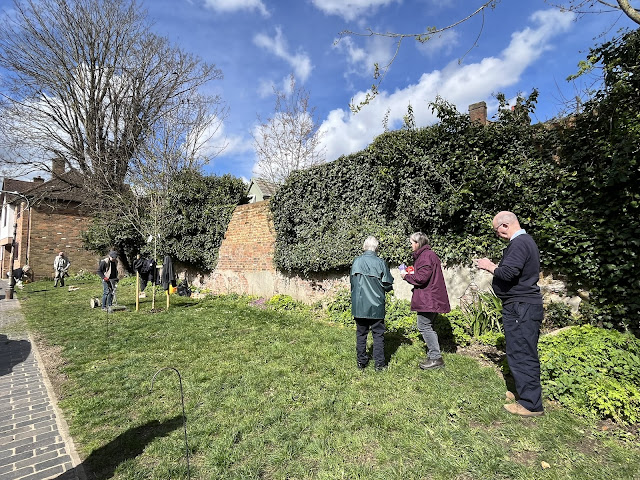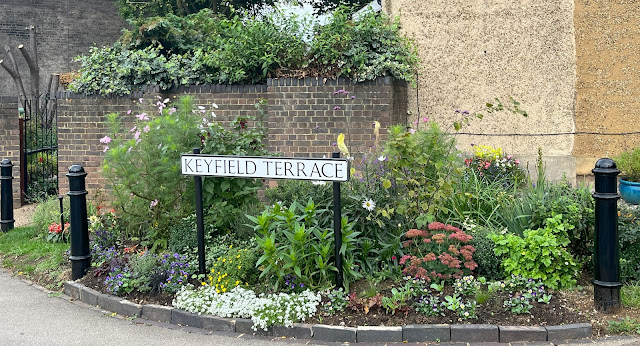Green Oasis Profile
The greenery site sits on the Sopwell Lane, between No. 9 and No. 3. This profile uses information expertly researched and logged by a local resident, Mary, who is also researching into the wildlife and plants on the site and started on a mater list of plants and wildlife sighted.
Orientation and Council Map:
There are 5 Council-owned trees on the Oasis as shown on the map on the District Council’s website (annotated by us – see below); at the west end, an elder (Sambucus nigra) and the big sycamore (Acer pseudoplatinus); and at the east end, another elder and sycamore with a field maple (Acer campestre) planted by the Council in front of them. More research is needed to identify the origin of the numbers found on the sycamore and ivy-smothered elder at the west end.East End / Woodland Area
 |
| Woodland Area (2022 photo) |
The sword-shaped leaves of the stinking iris can be seen at the foot of the elder tree.
 |
| East side plants (2022 photo) |
All parts of this biennial/annual spurge are toxic and produce severe discomfort if ingested. The Royal Horticultural Society advises wearing gloves and other protective equipment when handling, to avoid contact with the milky sap which causes skin and eye irritation. (In the past, beggars reputedly used the sap to create the spectacular sores that induced people to take pity on them.)
West End / Pond Area
 |
| View to the West side (2022 photo) |
Looking west towards Holywell Hill from the side wall of No. 33, with the Council-planted field maple in the foreground and the big sycamore dominating the skyline of the far end (or ‘pond area’).
Violet leaves were spotted near the side wall of No. 9, and a small early-flowering goosefoot in the grass which could be either Fat Hen or Good King Henry (both popular with wild foragers); also several sprigs of an evergreen shrub with small, stiff, close-set leaves, growing along the top of a section of ivy-covered retaining wall – still to be identified (possibly remnants of an Albert Street garden hedge?) The ‘oasis robin’ was in full song in the big sycamore.
Middle Section
 |
| Middle section (2022 photo) |



Comments
Post a Comment